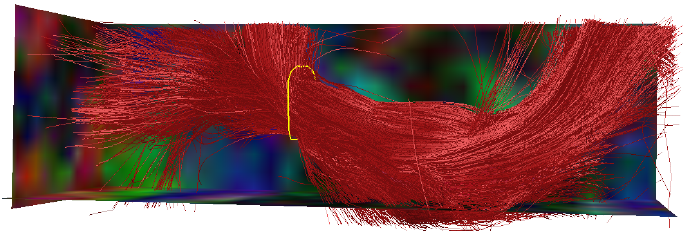Project: GPU-accelerated geodesic fiber tracking for HARDI data using CUDA
Description

The main goal of this research is improving the performance of geodesic fiber tracking for HARDI data by utilizing the parallel computing capabilities of a Graphical Processing Unit (GPU) through the CUDA language. Instead of sequentially tracking single fibers in one CPU thread, the high number of computation cores on a GPU allows us to compute many fiber paths in parallel. While this technique has been shown to be effective at reducing running times when using DTI data, an implementation for the HARDI variant of the geodesic fiber-tracking calls for an altered design due to differences in the algorithm. For example, the fact that computation of geodesics in a Finsler manifold is dependent on local fiber direction means that metric tensors cannot be fully preprocessed.
Details
- Student
-
HMHesselberth, M.
- Supervisor
-
 Andrei Jalba
Andrei Jalba
- Secondary supervisor
-
 Huub van de Wetering
Huub van de Wetering
- Link
- Thesis